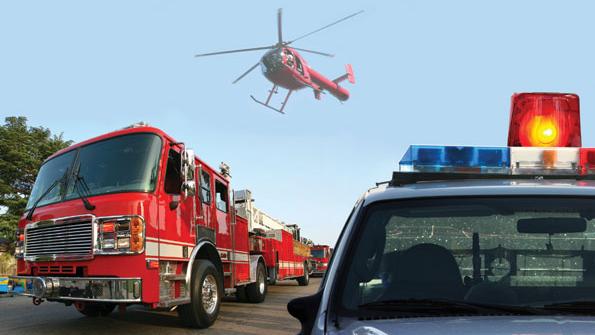Public safety communications set to expand with nationwide broadband network
What is in this article?
Next steps
With the D Block, public safety has 20 MHz of contiguous broadband spectrum, which is considered ideal to efficiently provide the high-speed throughput needed to enable bandwidth-intensive data applications, images and real-time video. However, while $7 billion in federal funding is an unprecedented figure for public safety, it is not enough to pay for a nationwide LTE deployment by itself.
One way public safety hopes to maximize the existing funding and to minimize the need for additional federal dollars is to seek partnerships with other potential users. Language in the new law appears to allow such deals to occur, and they will be needed to get the job done, McEwen said.
Several governmental entities already have indicated that they would like to provide their entire governmental enterprises — not just traditional public safety personnel — access to the new LTE network to enhance interoperability and streamline networking responsibilities. In addition, there have been increased discussions recently between other critical-infrastructure entities to allow them to access the proposed network to support important initiatives such as the smart grid and intelligent transportation systems.
While not traditionally considered to be part of public safety, the ability to communicate reliably with these critical-infrastructure entities often is vital to being able to respond effectively to an emergency situation, whether that situation calls for the evacuation of nearby residents or determining whether a utility can provide power to a critical location, said Richard Mirgon, former president of the Association of Public-Safety Communications Officials.
It is frustrating that critical-infrastructure entities such as utilities are not treated more like first responders at key junctures, Mirgon said. “A number of times, I have been out at a major gas-line break. You’ve rolled out [public safety], this gas line is spewing natural gas, you’re evacuating people, you call dispatch and say, ‘We need the gas company. Would you call them?’ The phone’s busy, because they’re getting calls from other people. When you finally get them … the gas company says it will be there in 45 minutes, because it’s on the other side of town. Meanwhile, this thing could still blow up.
“I get the fact that they’re not first responders, but it’s also kind of absurd that the people who can fix the problem aren’t treated like first responders in those very unique scenarios,” Mirgon said.
Being part of the public safety nationwide network could help alleviate the communications issues, which were underlined during the nuclear power-plant threat in Japan and by the oil spill in the Gulf of Mexico. Moreover, both Mirgon and McEwen noted that such partners can bring other assets — rights of way, fiber for backhaul and additional funding — that could make the network more reliable, robust and economical.
By almost all accounts, the process of pushing Congress to pass legislation regarding the D Block and LTE network funding demonstrated that communication within the upper echelons of public safety never has been greater. “I’ve been involved in public safety since the ’60s, and I’ve been in rooms where police chiefs and fire chiefs won’t talk to each other,” mobile wireless consultant Andrew Seybold said. “All of that has gone by the wayside for the common good.”

















Great, more strings attached
Great, more strings attached and more central control.
Because we really can make it a perfectly “safe” world where nobody gets hurt right?